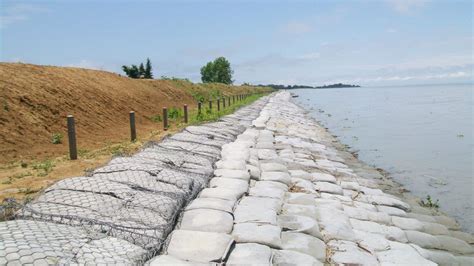Introduction
Coastal communities face the persistent threat of erosion and storm damage due to the relentless force of waves. Traditional seawalls and breakwaters, while effective in certain situations, can be expensive, environmentally disruptive, and aesthetically unappealing. Enter the cap for waves – a revolutionary solution that offers superior protection with minimal ecological impact.

What is a Cap for Waves?
A cap for waves is a flexible and permeable structure placed over the crest of a wave to reduce its energy. Composed of a lightweight mesh or lattice, the cap dissipates wave power by creating a turbulent flow that slows down and weakens the wave. Unlike rigid structures, caps for waves allow water and sediment to pass through freely, minimizing ecological disruption.
Benefits of Caps for Waves
- Enhanced Coastal Protection: Caps for waves effectively reduce wave height and energy, providing superior protection against erosion and storm damage.
- Environmental Friendliness: Their permeable design allows marine life to thrive and maintains natural sediment transport processes.
- Cost-Effective: Compared to traditional seawalls, caps for waves offer a more cost-effective solution in certain environments.
- Aesthetically Pleasing: The flexible and transparent nature of caps for waves makes them virtually invisible from a distance, preserving coastal aesthetics.
Applications of Caps for Waves
Coastal Protection:
* Safeguarding beaches and dunes
* Protecting coastal communities from erosion and storm surges
Marine Infrastructure:
* Shielding bridges and piers from wave damage
* Creating calm waters for marinas and harbors
Breakwater Development:
* Absorbing wave energy to create sheltered areas for swimming and fishing
* Establishing artificial reefs to enhance marine biodiversity
How Caps for Waves Work
Wave Energy Dissipation:
Caps for waves reduce wave height by breaking up the wave’s energy into smaller pockets of turbulence. The mesh or lattice structure creates a drag force that slows down the wave’s advance.
Water and Sediment Filtration:
The permeable design allows water and sediment to flow through the cap, facilitating natural sediment transport processes and minimizing ecological disruption.
Key Figures and Statistics
- According to the World Economic Forum, 90% of the world’s large cities are exposed to coastal flooding.
- The U.S. Army Corps of Engineers estimates that coastal erosion causes over $500 million in damage annually.
- Caps for waves have been shown to reduce wave height by up to 70% in field trials.
Effective Strategies for Cap for Waves Deployment
Site Selection:
* Identifying areas with high wave energy and erosion potential
* Considering environmental factors and marine life impacts
Design Optimization:
* Selecting mesh size and layout to match specific wave conditions
* Incorporating materials that resist corrosion and marine growth
Adaptive Management:
* Regularly monitoring cap performance and making adjustments as needed
* Incorporating feedback loops from environmental and coastal studies
Why Caps for Waves Matter
- Protecting Coastal Communities: Caps for waves safeguard coastal communities and infrastructure from the devastating effects of erosion and storm surges.
- Preserving Marine Ecosystems: Their permeable design allows marine life to thrive and maintains natural sediment transport processes.
- Balancing Development and Environmental Protection: Caps for waves offer a cost-effective and sustainable solution that minimizes ecological disruption while allowing for coastal development.
Frequently Asked Questions
1. What is the lifespan of a cap for waves?
* Typically 20-30 years, depending on environmental conditions and maintenance practices.
2. Can caps for waves be used in all wave conditions?
* Caps for waves are most effective in waves with a height of up to 3 meters.
3. How do caps for waves affect sediment transport?
* Caps for waves allow sediment to pass through, facilitating natural sediment transport processes.
4. Are caps for waves resistant to corrosion and marine growth?
* Yes, caps for waves are typically made of corrosion-resistant materials and coated with antifouling agents to prevent marine growth.
5. How much maintenance is required for caps for waves?
* Regular inspection and cleaning are recommended, along with periodic adjustments based on monitoring data.
6. How do caps for waves compare to traditional seawalls?
* Caps for waves offer superior protection and environmental friendliness at a lower cost in certain environments.
Conclusion
Caps for waves represent a transformative approach to coastal protection that balances the need for safeguarding communities with preserving marine ecosystems. Their ability to reduce wave energy, enhance coastal resilience, and minimize ecological disruption makes them a valuable tool in the fight against coastal erosion and storm damage. As coastal communities adapt to the challenges of climate change, caps for waves will undoubtedly play an increasingly vital role in protecting shorelines and preserving coastal environments.
